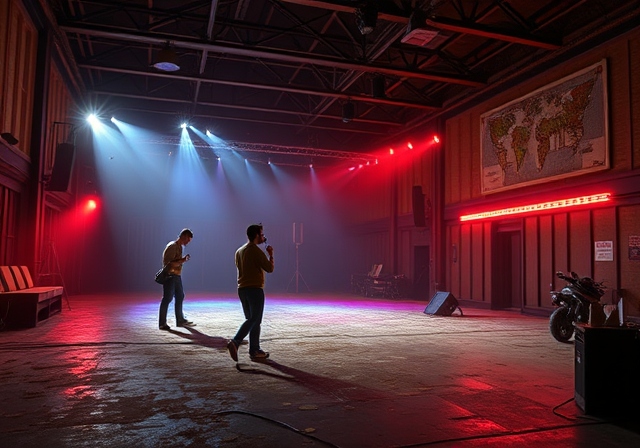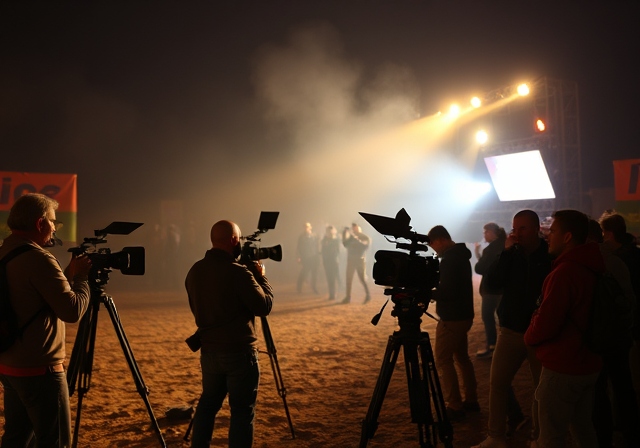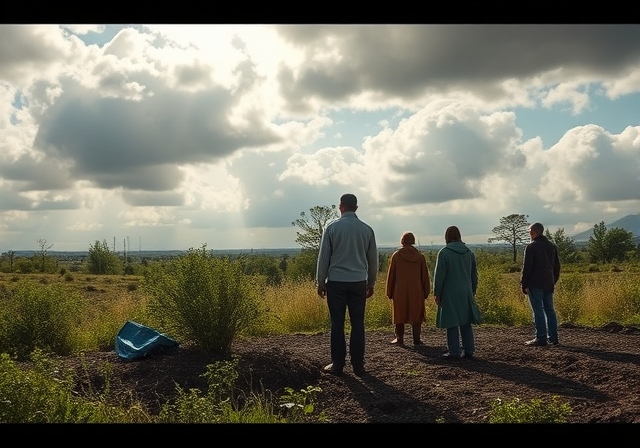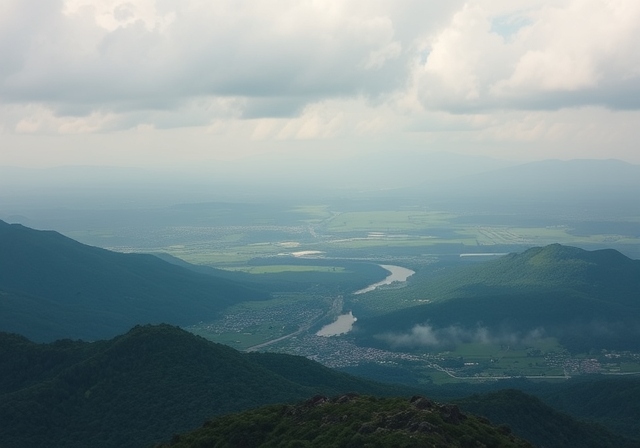California’s wildfire season has grown increasingly severe in recent years, and the latest round of fires is hitting especially hard. As of January 2025, devastating fires have torn through parts of Los Angeles and beyond, leading to widespread destruction, particularly in the Malibu and Palisades regions. While large studios and TV productions have halted filming, indie filmmakers are also grappling with the impacts. From halted shoots to air quality concerns, here’s how the ongoing wildfires are disrupting the indie film landscape and what it means for filmmakers and streaming platforms alike.

1. Production Disruptions
As wildfires ravage the region, major Hollywood studio lots, including those in Burbank, Glendale, and Hollywood, have paused filming. Productions like Grey’s Anatomy, The Rookie, and Doctor Odyssey have been temporarily suspended due to hazardous air quality and emergency efforts by firefighters. It’s not just the direct threat of fires to filming locations that’s causing delays but also the need to prioritize first responders and emergency routes. The forced halts are a reminder of the unpredictability filmmakers must contend with, even in the heart of the entertainment industry.
Indie filmmakers, who often rely on these same locations or smaller studio spaces, are facing similar challenges. Many productions have been halted due to smoke and air pollution, which pose serious health risks to cast and crew. While larger studios may have resources to pause and reschedule shoots, independent films—often working with limited budgets and smaller teams—may face even greater setbacks.
For some indie films, shooting in Southern California’s signature landscapes, such as Malibu, Santa Monica, and the Hollywood Hills, is integral to their aesthetic and narrative. But the fires have made these locations dangerous or inaccessible, forcing many filmmakers to find alternative locations, which can lead to additional costs, scheduling delays, and logistical nightmares.
The ongoing fires, including the Palisades Fire and Eaton Fire, are creating the kind of unpredictability that smaller productions simply can’t afford to endure.

2. Increased Production Costs and Uncertainty
The fires, particularly those affecting the Palisades region, have been some of the most destructive in California’s history. In addition to loss of homes and businesses, the fires have severely damaged iconic locations, including Palisades Charter High School, which has hosted numerous film and TV shoots over the years. While these fires haven’t yet directly threatened major studio lots like those at Radford or Sunset Gower, the ongoing evacuations and road closures have severely impacted production schedules.
For indie filmmakers, the financial strain of relocating or delaying shoots can be overwhelming. Unlike the larger studios that can reschedule with relative ease, many indie productions are working with limited funds. Relocation costs, combined with the need for additional permits and logistics, put a significant strain on budgets. Furthermore, disruptions caused by poor air quality—forcing crews to stay indoors or delay filming altogether—add unexpected costs that many indie productions can’t absorb.
Filmmakers may also have to reconsider their location choices entirely, as areas previously considered affordable for indie films are becoming too risky or difficult to access. Moving production to other states or even overseas might become an even more attractive option, as filmmakers seek to avoid the uncertainty of wildfire seasons in California.

3. The Impact on Industry Talent and Workforce
The current fires have also caused devastating losses to the talent and crew who make up the backbone of the industry. High-profile names, including Billy Crystal, Mandy Moore, and Anna Faris, are among those who have lost homes in the fires, leading to broader concerns about the stability of the local workforce. This personal toll is particularly hard for indie filmmakers who rely on a tight-knit community of local talent and crew.
As talent and crew are displaced by the fires, there is concern that the local pool of skilled labor could dwindle, which would drive up hiring costs for smaller productions. If this trend continues, more indie filmmakers might be forced to relocate their productions or adjust their plans to accommodate the economic realities of hiring from outside the region.

4. Shifting to Virtual Production and Remote Filmmaking
With fires causing disruptions and forcing many filmmakers to rethink their shooting locations, virtual production technologies are likely to become an even more attractive option for indie filmmakers. Virtual sets, motion capture, and digital backdrops allow filmmakers to create elaborate scenes without risking the safety of cast and crew on location. This shift, accelerated by the pandemic and the rise of streaming platforms, may become a permanent solution for indie filmmakers who need to adapt to a changing environment.
For example, Amazon and Universal have already pulled productions out of Los Angeles in recent years, as the state struggles to keep up with the competition from other states offering more lucrative tax credits. Virtual production offers a way for filmmakers to bypass these concerns while still creating high-quality, visually stunning work.

5. Reckoning with the Bigger Picture: Climate Change and Sustainability
The increasing frequency of wildfires in California is directly tied to the broader issue of climate change. As the environment becomes more volatile, filmmakers are facing not just logistical challenges but ethical dilemmas about how their work contributes to environmental degradation. In response, some indie filmmakers are using their platform to raise awareness about the climate crisis, with narratives that reflect the devastating effects of natural disasters.
For streaming platforms that showcase independent films, environmental storytelling is likely to resonate more with audiences. Films that tackle the effects of climate change, the challenges of disaster recovery, and the resilience of communities affected by wildfires might become more prominent in the coming years. Indie filmmakers, many of whom have long been leaders in environmental advocacy, are uniquely positioned to tell these urgent stories.
As filmmakers and streaming services grapple with the impact of the fires, many are finding innovative ways to remain sustainable. Some productions are adopting greener practices, including using renewable energy sources, minimizing waste, and opting for eco-friendly sets. These initiatives help mitigate the environmental footprint of filmmaking, which is becoming a priority as the industry responds to the growing challenges of wildfires.

6. The Long-Term Impact: What Does the Future Hold?
The current wildfires are part of a larger trend of climate-induced natural disasters that will continue to affect Hollywood and indie filmmakers for years to come. The rising costs of filming in California, combined with the growing instability of local environments, could accelerate the industry’s already existing trend of filming abroad to take advantage of tax incentives and more stable weather patterns.
At the same time, streaming services that rely on a constant influx of new content might find that indie filmmakers, who once flocked to Los Angeles for its creative opportunities, are moving to other regions or countries. The future of indie filmmaking might look different as the industry adapts to these changes—perhaps in the form of virtual productions, remote shoots, or even shifting global hubs that are less prone to environmental risk.
Conclusion: Adapting to a New Normal
As California’s wildfires continue to disrupt both the landscape and the film industry, the challenges facing indie filmmakers have never been clearer. From logistical nightmares to rising production costs, smaller studios and independent productions must find ways to adapt. Whether it’s through virtual production, relocating to more stable areas, or embracing sustainability practices, filmmakers are finding new ways to keep their creative visions alive.
The future of indie filmmaking in California will depend on resilience — not just in overcoming the immediate effects of these fires but also in addressing the larger environmental and economic shifts that are reshaping the industry. For streaming services, this means more than simply providing a platform for films; it involves fostering a community of storytellers who can navigate the complex challenges of a rapidly changing world.
The fires, as devastating as they are, may also spark a new era of filmmaking where innovation, sustainability, and creativity are at the forefront. The industry’s ability to adapt will determine whether it can continue to thrive amid the ongoing crises.


